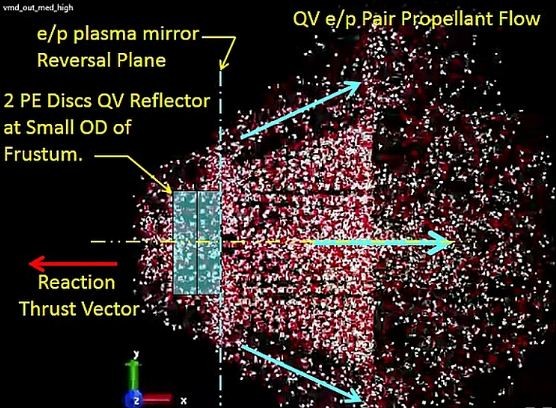The American Institute of Aeronautics and Astronautics (AIAA) confirms it will publish a paper about the Em Drive, the highly controversial space propulsion technology that can allegedly move a spacecraft in violation of accepted laws of physics.
The admission by AIAA ended weeks of speculation and means a study prepared by a team of scientists from the Advanced Propulsion Physics Laboratory at NASA's Johnson Space Center, also known as "Eagleworks," has passed peer review.
AIAA said the paper on electromagnetic propulsion will be published in its AIAA Journal of Propulsion and Power this December.
The paper, "Measurement of Impulsive Thrust from a Closed Radio Frequency Cavity in Vacuum," suggests Em Drive (electromagnetic drive) technology apparently works. It's authors are Harold White, Paul March, Lawrence, Vera, Sylvester, Brady and Bailey.
March earlier confirmed a paper on the Em Drive had gone ahead earlier this year, but didn't sound too optimistic when he noted that "peer reviews are glacially slow."
Previously, Dr. José Rodal on NASA's Spaceflight forum said the paper had passed rigorous academic scrutiny but his online comment was later removed, fueling confusion as to the true status of the paper.
Rodal's deleted post also revealed the "Thrust data in mode shape TM212 at less than 8106 Torr environment, from forward, reverse and null tests suggests that the system is consistently performing with a thrust to power ratio of 1.2 +/- 0.1 mN/Kw ()".
Also called a radio frequency (RF) resonant cavity thruster, an Em Drive is an electromagnetic thruster that uses no reaction mass and emits no directional radiation. Skeptics have long said the design principles of this machine aren't supported by prevailing scientific theories and violate the law of conservation of momentum.
Aerospace engineer Roger Shawyer designed the EM Drive in 2001 and has promoted the idea through his company, Satellite Propulsion Research. Chemical engineer Guido Fetta then designed the Cannae Drive, broadly based on similar principles.
While considered implausible, the Em Drive and Cannae Drive -- if they work as theorized -- will revolutionize many propulsion applications, especially those used in spaceflight.
The thruster somehow harnesses subatomic particles that continuously fade into and out of existence to generate thrust. It seems to exploit an effect called "quantum vacuum fluctuation" in which sub-atomic particles spontaneously create themselves in the vacuum of space before self-destructing.



























